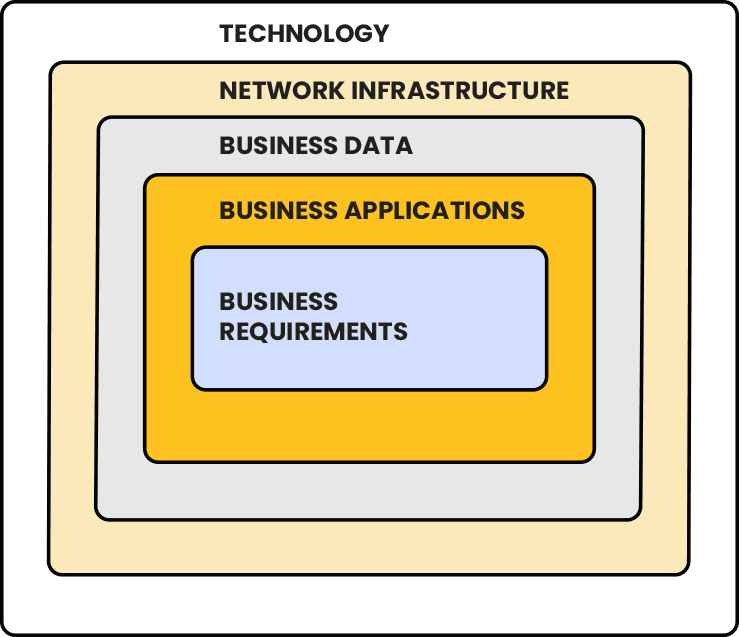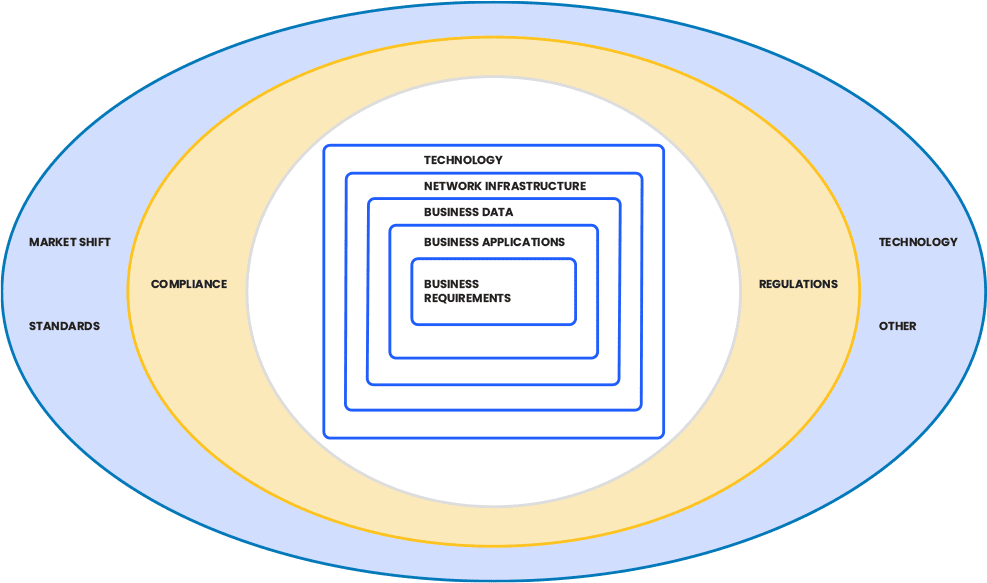Effective Network Architecture Strategy
By Jude Lamour, DeVry University Professor
July 14, 2021
6 min read
Network infrastructure is the backbone of a company's communications. It provides a reliable and secure system for employees to communicate with each other, use online resources and store data or "in-house" information. Network infrastructure helps organizations conduct their day-to-day operations. And while networking technologies are ubiquitous, to effectively stay on top of changes in this industry, senior executives must ensure that their organizations' network architecture aligns with their business needs.
To that end, it is not enough to buy the latest IT gadgets. To be successful, IT practitioners need to assess their organization's business needs and implement technologies that adapt to both present and future changes in the business environment.
Top-Down Network Design Model

To be effective, a network architect needs to design flexible infrastructures that align with their organization's strategic goals. Use of a top-down network design model as opposed to a bottom-up approach is more likely to lead to a successful infrastructure design.
The top-down approach includes several critical layers. Unlike the bottom-up approach that begins to look at the technology layer, the top-down approach begins with the business needs first all the way to the technology layer. The top-down model in this article is comprised of five distinct layers listed in order from the top down. They are the business requirements layer, the application layer, the data layer, the network infrastructure layer and, finally, the technology layer.1
Top-Down Network Model with Other Factors Included


About Professor Jude Lamour, Ph.D., CISSP, CISM, CCAI
Jude Lamour is a Professor of Engineering and Information Sciences at DeVry College of New York. He has earned a PhD in Management Information Systems with an emphasis in Information Assurance. Lamour has designed, implemented and managed many security projects for large enterprises in the financial sector in New York City, and he currently holds the Cisco Certified Academy Instructor (CCAI) certification in networking and security.
1Goldman, J. E. (1997). Local area networks: a client/server approach. New York: J. Wiley.
Filter Blog Post Category
- Category
- Program area





